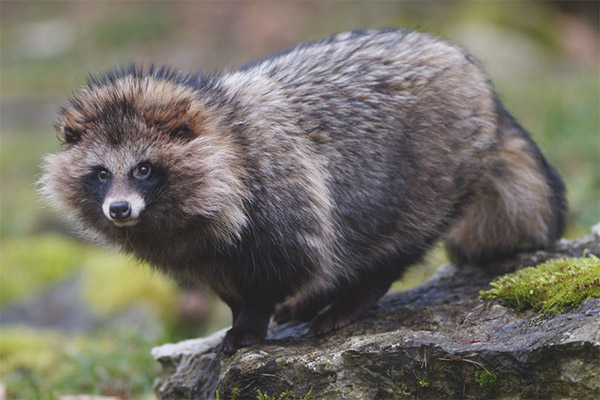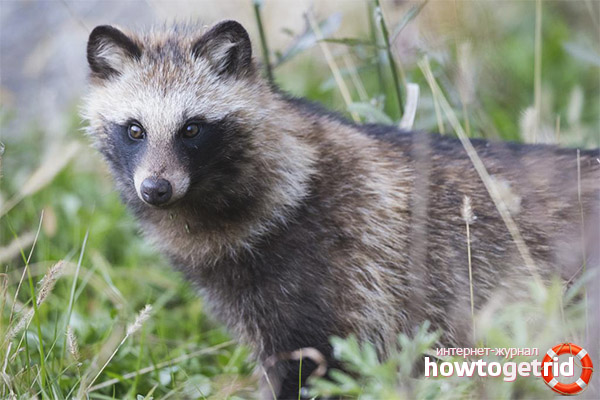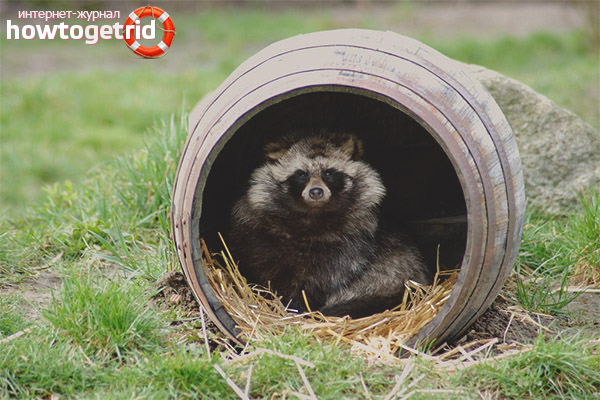The content of the article
The raccoon dog is an individual of the dog or dog family, a predator. Belongs to the category of mammals. Omnivorous. Its closest relative is the fox, and therefore it is widely known as the Ussuri raccoon fox. In addition, she received such names as raccoon, Ussuri raccoon. In some countries, it is called mangut or tanuki.
Characteristic features
The Raccoon is a mysterious and unusual representative of the fauna, combining the features and habits of different, not similar animals. According to external characteristics, it has a great similarity with the raccoon raccoon. They have the same skull structure and brightly visible color of the face under the famous "raccoon mask" of bright dark color, similar in color and structure to the wool.The raccoon dog borrowed many of its habits from the fox. It is domesticated, it guards the house and walks like an ordinary domestic dog, and when living directly inside the house it is taught to go to the toilet in the cat tray.
The size of an adult raccoon dog does not exceed the size of an ordinary simple dog. Their dimensions are about the same. The body is elongated, about 80 cm long, the tail is up to 25 cm long, the total body weight ranges from 4 to 10 kg.
The dark gray or brown gray color of the fur of the Ussuri raccoon gradually changes to the clarified shades of the fur below. Seldom there are individuals with red coloring. There are also albinos in this breed possessing white fur. The hair of the Ussuri raccoon is very coarse, rather long, a bright strip of dark color along the whole line of the ridge, a short fluffy tail without any stripes and marks. By constitution, it is a medium-sized animal, at the same time rather stocky, with short legs, which moves only along the ground, not climbing trees and bushes. Excellent swims. The cheeks give the impression of an ash-colored sideburn.
Habitats
Favorable conditions for their living and breeding is a humid climate. They settle in places in the lowlands, densely grown undergrowths, along the armhole of the rivers, on the banks of water bodies, meadows with high humidity, riverine forests, and marshlands.
Lifestyle
Being unpretentious in nature, often the raccoon dogs choose the abandoned burrows of foxes and badgers found to live in, live in rocky crevices, and are located between the roots of trees.In the absence of these places, they are content with open stools near the road, next to human settlements. It is rare when they dig a refuge for themselves with their paws.
Dogs of this breed lead active livelihoods at night, getting out of their homes after dusk. Larger predators, mostly wolves, can easily fall prey to their tracks and actively destroy even the strongest stocky individuals of this breed, especially in the spring-summer period. Incomplete small young raccoon dogs additionally become easy prey for lynx, foxes, street stray dogs. The Ussuri raccoon usually does not enter into a fight with the enemy for its life, the ability to instantly hide and pretend to be dead helps to escape from their pursuit, which is often an effective method. The same method of protection is used by the raccoon dog and when a man appears - a hunter, who is also her enemy. A dead animal on the way confuses the hapless hunter, and in the meantime, taking advantage of his bewilderment, the raccoon also instantly comes to life and was like that.
With the onset of winter cold and severe frosts, there is a decrease in the active life of a raccoon dog by about 25%. There are protective properties of her body - hibernation, which lasts for all frosty winter days, on average hibernation lasts from 1 to 3 months. This feature distinguishes them from other dog breeds. With a cold winter with a moderate temperature, the raccoon does not fall into hibernation, but stays awake, pereizhivaya periodically occurring severe temperature drops in his shelter.
By the onset of spring, the once-dense wool significantly thinns, becoming dull, which creates a feeling of untidy and untidy condition of this animal.
Nutrition
The nutritional diet of a raccoon dog is rich in diversity due to its omnivorous nature. She explores various secluded areas in search of food, wanders in the shallow areas of forest reservoirs or explores the coast of the sea. According to the method of collecting food is a typical collector.
Raccoon has undeveloped canines, flattened teeth. Her feed ration is very diverse.Being a predator by nature, it mainly feeds on small mouse-like animals, trampling bird nests, eating eggs. Of the birds in her diet includes black grouse, pheasants, capercaillie, grouse. Do not mind to diversify their food beetles and other various insects, frogs. Along with this, it is also free to use simply food of plant origin: fruits falling from trees, berries, oat grains, millet, corn cobs, various vegetable crops, bulbs and rhizomes.
In search of food, he can walk 10 km a day, looking for food near ponds or among thickets of trees and shrubs. Unpretentiousness in food is expressed by the ability to consume even food waste or half-dead fish. They willingly swarm in the garbage, ruining the garden. Constant searches for food cease with the onset of winter, when dogs that are not adapted to the snow with too short legs fall into it, making it difficult to move actively. Therefore, the dog's instinct before the onset of winter cold is the desire to feed ourselves more, to gain weight and calmly hibernate.
The domesticated raccoon is also unpretentious in food, but to ensure the preservation of its health and activity, it is desirable to diversify the daily diet with foods containing vitamins and trace elements necessary for life and growth. It must be: meat, fish products, cereals and grains, vegetables. There are also specially produced dry dog food containing all the necessary nutrients.
Raccoon Dog Domestication
Currently, the trend of fashion has become the cultivation of a raccoon dog in the house. It takes root in direct contact with a person quite well, although it can sometimes be a little aggressive and irritable, even able to bite. Despite this, there is no serious danger to humans. Keep it in the courtyard of the house, because the room will have a bright, not very pleasant smell, and the pet will be hot and cramped in the house.
For domestication, still very young puppies are taken from the female, raised in captivity, using artificial feeding.Only in this way can one raise a domesticated raccoon dog, catch an adult individual of this breed in the wild and tame it.
Bred in captivity from a young age, the puppy is often charming, cute, playful, and can be trained. Often an excellent security dog grows out of it. In the cities of Japan, their domestication and keeping in human houses was a widespread phenomenon. The culture of Japan is known for legends and tales of tanuki, which are pets in many Japanese homes.
Grown away from natural conditions, the puppy quickly gets used to the people around him, they will not be able to adapt to life in the wild. He will always strive for people back, risking to become an easy hunting trophy.
Periodic examination of the dog by a veterinarian is obligatory, in some cases they may be carriers of the rabies virus.
Reproduction, life expectancy
This mysterious and unusual dog lives not for long in the natural natural wild environment, its age rarely exceeds 4 years. Domesticated, can live from 10 to 15 years, subject to good care for her.
Video: raccoon dog (Nyctereutes procyonoides)














To send